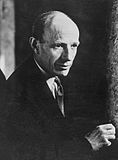| |||||||||||||||||||||||||||||||||||||||||||||||||||||||||||||||||||||||||||||
481 of the 615 seats in the House of Commons 241 seats needed for a majority | |||||||||||||||||||||||||||||||||||||||||||||||||||||||||||||||||||||||||||||
|---|---|---|---|---|---|---|---|---|---|---|---|---|---|---|---|---|---|---|---|---|---|---|---|---|---|---|---|---|---|---|---|---|---|---|---|---|---|---|---|---|---|---|---|---|---|---|---|---|---|---|---|---|---|---|---|---|---|---|---|---|---|---|---|---|---|---|---|---|---|---|---|---|---|---|---|---|---|
| Turnout | 51.1%, | ||||||||||||||||||||||||||||||||||||||||||||||||||||||||||||||||||||||||||||
| |||||||||||||||||||||||||||||||||||||||||||||||||||||||||||||||||||||||||||||
 Colours denote the winning party—as shown in § Results | |||||||||||||||||||||||||||||||||||||||||||||||||||||||||||||||||||||||||||||
| |||||||||||||||||||||||||||||||||||||||||||||||||||||||||||||||||||||||||||||
United Kingdom of Great Britain and Northern Ireland Buxton Britain | |||||||||||
|---|---|---|---|---|---|---|---|---|---|---|---|
| 1940–1947 | |||||||||||
| Motto: "By the grace of God" | |||||||||||
| Anthem: "God save the King" (official) Comrades, the voices (unofficial) | |||||||||||
 The United Kingdom in 1944:
| |||||||||||
| Status | Client state of Germany (1940–45) Puppet government of Germany (1945–47) | ||||||||||
| Capital | Buxton (de facto) Londona (de jure) | ||||||||||
| Capital-in-exile | Gehrden (1946–47) | ||||||||||
| Common languages | English | ||||||||||
| Government | One-party fascist regencyb | ||||||||||
| Lord-Lieutenant of Great Britain | |||||||||||
• 1940–1947 | David Lloyd George, Duke of Cardigan | ||||||||||
| Prime Minister | |||||||||||
• 1940–1942 | Samuel Hoare | ||||||||||
• 1942–1946 | Patrick Boyle, 8th Earl of Glasgow† | ||||||||||
• 1946-1947 | Alexander Raven Thomson | ||||||||||
| Legislature | Parliament | ||||||||||
| Historical era | World War II | ||||||||||
| 14 October 1940 | |||||||||||
| 18 October 1940 | |||||||||||
| 9 June 1945 | |||||||||||
| 11 July 1945 | |||||||||||
| 28 February 1946 | |||||||||||
• Disestablished | 1947 | ||||||||||
• Capture of the Gehrden enclave | 5 August 1947 | ||||||||||
| Currency | Pound sterling | ||||||||||
| |||||||||||
| |||||||||||
United Kingdom of Great Britain and Northern Ireland Free Britain | |||||||||
|---|---|---|---|---|---|---|---|---|---|
| 1940–1946 | |||||||||
| Status | Government in exile, provisional government over unoccupied and liberated territories | ||||||||
| Capital | London | ||||||||
| Capital-in-exile |
| ||||||||
| King | |||||||||
| Prime Minister | |||||||||
| Field Marshal | |||||||||
• 1940–1946 | Bernard Montgomery | ||||||||
| Historical era | World War II | ||||||||
| 29 October 1940 | |||||||||
| December 1940 | |||||||||
| March 1943 | |||||||||
| 1943–1945 | |||||||||
| 5 June 1945 | |||||||||
| spring 1946 | |||||||||
| |||||||||







